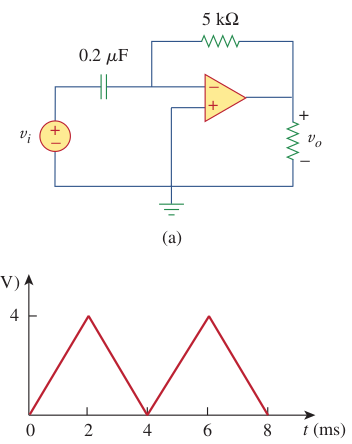class: center, middle # EE-281 # OPAMP Applications # First-Order Circuits ## Ozan Keysan [ozan.keysan.me](http://ozan.keysan.me) Office: C-113 <span class="meta">•</span> Tel: 210 7586 --- # Capacitor Voltage & Current # \\(i = C\frac{dV}{dt}\\) -- # \\(V = \frac{1}{C} \int_0^t i(t) dt\\) -- ## Energy stored in a capacitor is: # \\(w = \frac{1}{2} C V^2\\) --- ## DC Response # \\(i = C\frac{dV}{dt}\\) -- - ## Current of capacitor is zero if there's no change in the voltage (i.e. DC voltage) -- - ## Capacitor voltage cannot be change instantenously as this means infinite current. --- ## Parallel Capacitors  -- ## \\(C_{eq} = C_1 + C_2 + C_3 ... + C_N\\) --- # Series Capacitors  -- ## \\(\frac{1}{C\_{eq}} = \frac{1}{C_1} + \frac{1}{C_2} + \frac{1}{C_3} ... \frac{1}{C_N}\\) --- # Series Capacitors  ### For two capacitors ## \\(C_{eq} = \frac{C_1 C_2}{C_1 + C_2}\\) --- # Inductors # \\(V = L \frac{di}{dt}\\) -- ## \\(I = \frac{1}{L} \int_0^t V(t) dt\\) -- ### Energy stored in an inductor is: # \\(w = \frac{1}{2} L I^2\\) --- #DC Response -- ## - An inductor behaves like short-circuit under DC -- ## - Inductor current cannot be change instantenously as this means infinite voltage. --- # Series Connection Equivalent inductance of series connected inductors are the sum of inductances:  ## \\(L_{eq} = L_1 + L_2 + L_3 ... + L_N\\) --- # Parallel Connection  ## \\(\frac{1}{L\_{eq}} = \frac{1}{L_1} + \frac{1}{L_2} + \frac{1}{L_3} ... \frac{1}{L_N}\\) --- # OPAMP Applications ## Analyze the circuit:  --- # OPAMP Applications ### \\(i_R = i_C\\) ### \\(i_R = V_i/R\\) ### \\(i_C = -C d v_o /dt\\) ### \\(dv_o = -\frac{1}{RC}v_idt\\) -- ### Integrating both sides: ### \\(v_o = -\frac{1}{RC} \int_0^tv_i(t) dt\\) --- # Integrator:  --- # Exercise: ##Find the output voltage if: ### \\(v_1 = 10 cos (2t)~mV\\) ### \\(v_2 = 0.5t~mV\\)  --- # OPAMP Applications ## Analyze the circuit:  --- # OPAMP Applications ### \\(i_R = i_C\\) ### \\(i_R = - V_o/R\\) ### \\(i_C = -C d v_i /dt\\) ### \\(v_o = -RC dv_i(t)/dt\\) --- # Differentiator  --- # Example ### Draw the output voltage if the input voltage is as follows:  --- # Any questions? ## You can download this presentation from: [keysan.me/ee281](http://keysan.me/ee281)